Dust is one of the most common causes of allergic and asthmatic reactions. Even those lucky enough to not have severe reactions can be impacted by inhaling or contacting dust particles. So what is dust and why is it an issue?

Dust is a complex cocktail of soil particles, pollen, hair, clothing fibers, pet dander, bacteria, and sloughed-off skin cells. It even contains chemical compounds and microscopic specks of plastic. To add to the “ick” factor, dust composition also includes bits of dead bugs and insect droppings. And dust mites.
Table of Contents
What Are Dust Mites Exactly?
Dust mites are tiny insect-like pests that can trigger allergic reactions and asthma in many people. Measuring only about one-quarter to one-third of a millimeter, they cannot be seen with the naked eye. Under a microscope, they look like white bugs with eight legs.
Dust mites feed on the dead skin cells shed by humans and pets every day. The Asthma and Allergy Foundation of America (AAFA) says that an average adult person can shed up to 1.5 grams of skin per day—enough to feed a million dust mites.

Those sloughed-off skin cells are found in dust. Dust mites thrive wherever these skin cells work their way deep into the layers of furniture, upholstery, mattresses, sheets, and even stuffed toys. Hundreds of thousands of dust mites can live in the “nests” provided by bedding, carpets, or curtains in your home.
The presence of dust mites doesn’t mean that your house is not clean. Dust mites occur naturally and are present wherever humans live indoors. According to the American Lung Association, an estimated four out of five homes in the US have detectable traces of dust mites. They are found on every continent except Antarctica.
Ideal Dust Mite Climates
Dust mites prefer higher humidity environments of 70% to 80 % as well as temperatures ranging between 68 to 77 degrees Fahrenheit (20 to 25 degrees Celsius). A direct correlation can be found between high humidity levels and higher concentrations of dust mites.

This is because dust mites absorb molecules of moisture from the air rather than drinking water. Dust mites cannot survive in dry environments and low-humidity locations like deserts that lack the moist air they need. They can, however, survive year-round in a warm, humid house.
While dust mites will die in low humidity and extreme temperatures, they leave behind their dead bodies and waste products. These are the allergens that cause allergic reactions.
Dust mites are not parasites—they don’t live off of humans or burrow into skin. These mites also don’t bite like bed bugs, although the allergic reactions triggered by their fecal pellets and body fragments can include skin rashes.
Dust Mites and Your Health
Importantly, dust mites may be the most common trigger of year-round allergies and asthma.

Because dust mites are found wherever humans and their skin cells are, you can’t really eliminate them completely. You can, however, take steps to reduce their numbers and impact in your house and on your health.
Symptoms of Dust Mite Allergy
Not everyone is sensitive to dust mites. If you are, common symptoms can include:
- Sneezing
- Stuffy or runny nose
- Coughing
- Itchy, watery eyes
- Itchy nose, mouth, or throat
- Postnasal drip
- Red, itchy skin or rash
Asthma can be aggravated by dust mite allergies. The AAFA states that worsening symptoms of asthma flare-ups can include:
- Difficulty breathing
- Chest pain or tightness
- Whistling or wheezing sounds when exhaling
- Shortness of breath, coughing, or wheezing enough to cause trouble sleeping
If you experience any of these, check with your healthcare provider. A doctor can diagnose a dust mite allergy with a skin or blood test.
Treatment for dust mite allergies starts with reducing symptoms by limiting your dust mite exposure. You may need medication if your allergic symptoms are chronic or severe, especially since eliminating dust mites completely is virtually impossible.

Both over-the-counter and prescription medications can be highly effective in reducing allergic symptoms. Commonly used medications are:
- Antihistamines
- Nasal Corticosteroids
- Nose Sprays
- Decongestants
More severe cases may find allergy shots for one to three years or sublingual (under-the-tongue) immunotherapy more effective.
How To Reduce Dust Mite Exposure
People most at risk for dust-mite exposure are not just those who suffer from allergies or asthma. Those most susceptible to dust mites include:
- Those living in humid climates
- Those living in older houses or apartments that have unavoidable dust deep in crevices
- Older people
- Immunocompromised people
- Children
- Those living in homes with musty or mildewy odors are more at risk.
Dust mite allergens usually attach to particles that settle into dust and fabrics, rather than staying airborne. Because these fabrics often include pillows, bedding, and carpets, these “nests” get stirred up during sleeping, making beds, and cleaning—or anytime dust is disturbed.
Remember that having dust mites doesn’t mean that you and your house aren’t clean. These mites live in every home, no matter how clean, and on almost every continent.
That being said, try some of all of these steps to prevent them as much as possible.
1. Reduce humidity
This is probably the most effective prevention step you can take. Keep your home, especially the bedroom, below 50% humidity.

Try using air conditioning and dehumidifiers in extremely humid climates. Opening the windows for an hour every day can help to lower indoor humidity as well.
2. Reduce or eliminate carpet
Carpeting offers a great home for dust mites, especially if carpeting is over concrete, which holds moisture easily.
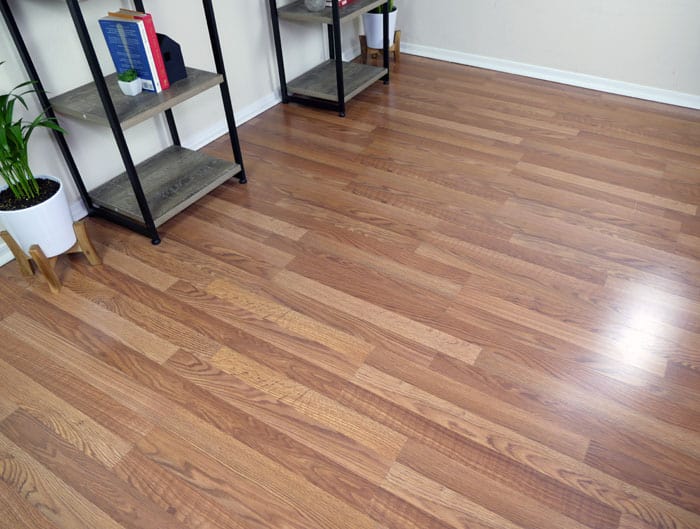
The Mayo Clinic recommends, if possible, replacing wall-to-wall bedroom carpeting with tile, wood, linoleum, or vinyl flooring. Use washable throw rugs instead.
3. Vacuum regularly
This removes surface dust but not dust mites and allergens embedded more deeply in carpet or upholstery fibers. Where you must keep carpet, choose a short tight pile. Regularly use a vacuum cleaner with a HEPA (High Efficiency Particulate Air) filter or a double-layered microfiltered bag.
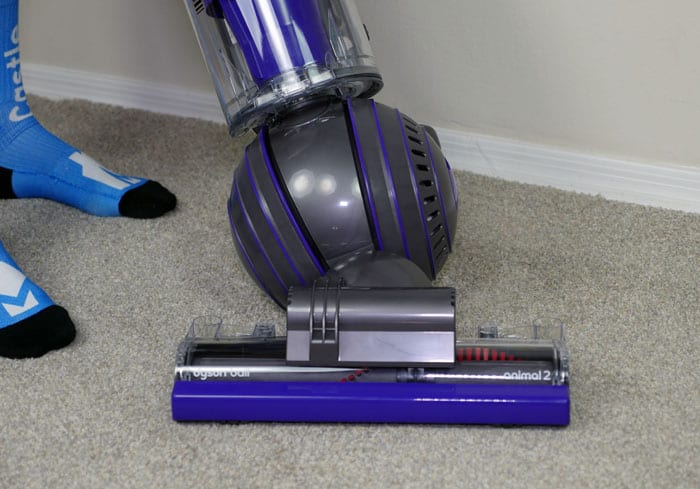
Check here for Asthma and Allergy Friendly Certified vacuum cleaner standards.
4. Wash fabrics in hot water
This applies to all bedding (sheets, pillowcases, mattress covers, blankets—once a week), towels, rugs, and if possible, even curtains. Hot water works far more effectively than cold water and must be at least 130 degrees to kill mites. Don’t forget pet bedding as well.
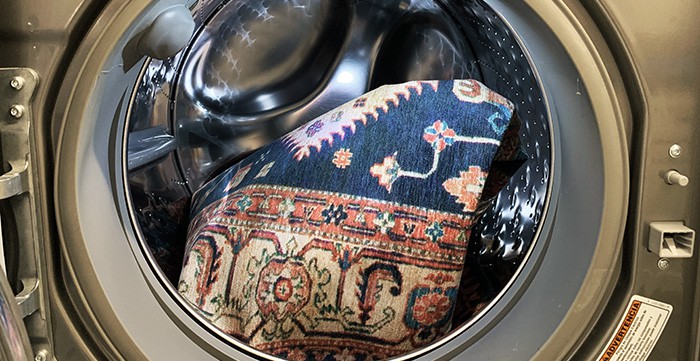
Dry cleaning also kills all dust mites and removes allergens embedded in fabrics.
5. Protect your bedding and your bedroom
According to the AAFA, studies show that more dust mites are found there than anywhere else in the house.
Use zippered dust-proof mattress and pillow covers. The pores of their allergen-impermeable material are too small to allow dust mites and their waste products to pass through. Plastic or vinyl covers are commonly used inexpensive ones although some people find them uncomfortable.
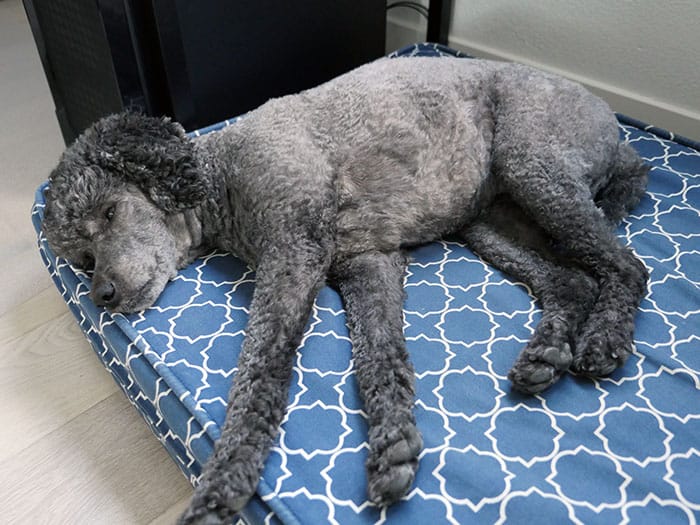
Many bedding and home goods stores offer other fabric allergen-impermeable covers. Check for ones that are breakable, easily cleanable, durable, and contain no chemicals known to trigger asthma or allergic reactions.

Avoid choosing bed covers that are difficult to clean or trap dust easily. The National Institute of Environmental Health Sciences (NIEHS) recommends that you replace wool, down, or feathered bedding products with synthetic materials, and traditional stuffed animals with washable ones. If possible, replace fabric curtains with wood blinds or roll-type shades, and upholstered furniture with wood or metal as well.
Pro-tip from the NIEHS: Non-washable bedding can be frozen overnight.
Note that pesticides do not work on dust mite allergens. While some may kill the dust mites, they don’t eliminate the allergens themselves—i.e, the mites’ body fragments and fecal matter. Removing the allergens requires dusting, washing, filtering, and cleaning.
Pro-tip from the Mayo Clinic: “If bedding can’t be washed hot, put the items in the dryer for at least 15 minutes at a temperature above 130 F (54.4 C) to kill the mites. Then wash and dry the bedding to remove allergens.”
6. Damp-mop and dust regularly
Remember dust mites are found wherever dust collects. Use a damp cloth, mop, or duster to trap dust when cleaning. Don’t use dry cloths which will stir up allergens. Make sure to get blinds, furniture crevices, and other small areas where dust collects.

Guardsman Dusting Cloths are one example of specially treated cloths that trap and lock in dust even more effectively than paper towels that can leave fibers behind. Products like these also eliminate the need for extra spray cleaners.
7. Eliminate other places where dust mites hide
Clutter, fabrics, and surfaces all attract dust, which means mites. To reduce mite exposure, try:
- Getting rid of all fabrics (not just wall-to-wall fabric but also non-washable curtains or rugs, upholstered chairs) and horizontal blinds that you can’t easily and regularly clean in hot water.
- Cutting clutter. Remove or reduce ornaments, books, even some furniture if possible to reduce the surfaces that can harbor mites in the dust they collect.
- Prioritize better surface options. In general, use as many smooth, easily cleanable surfaces in place of surfaces and fibers that can’t be cleaned or allow mites to make themselves at home.
8. Filter your air
Use certified high-efficiency allergen-capturing filters in all air conditioning units and vacuums to fully trap all dust mites and their waste products. This can help trap dust allergens from your entire home as opposed to freestanding air cleaners that only impact a limited area.
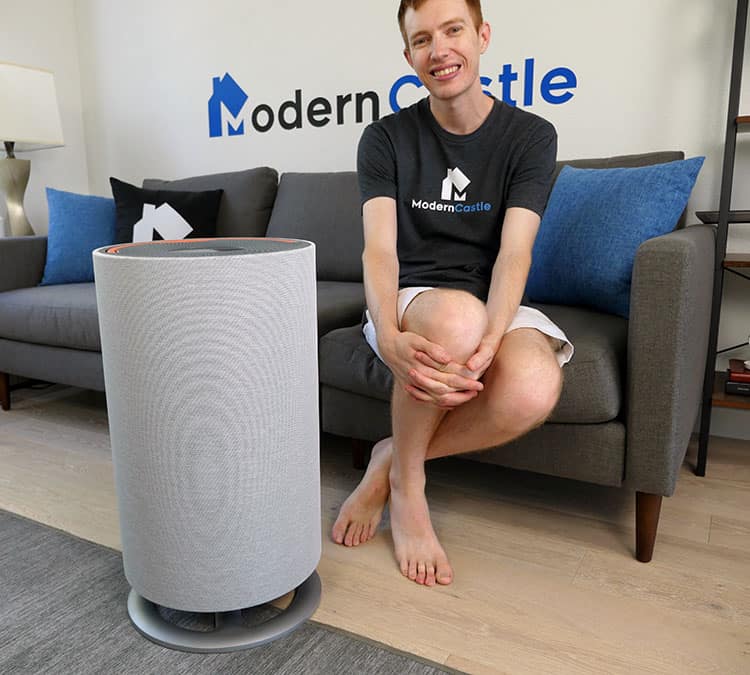
The Mayo clinic recommends installing a filter with a Minimum Efficiency Reporting Value (MERV) of 11 or 12. Leave the fan on to create a whole house air filter and make sure to replace the filter as recommended.
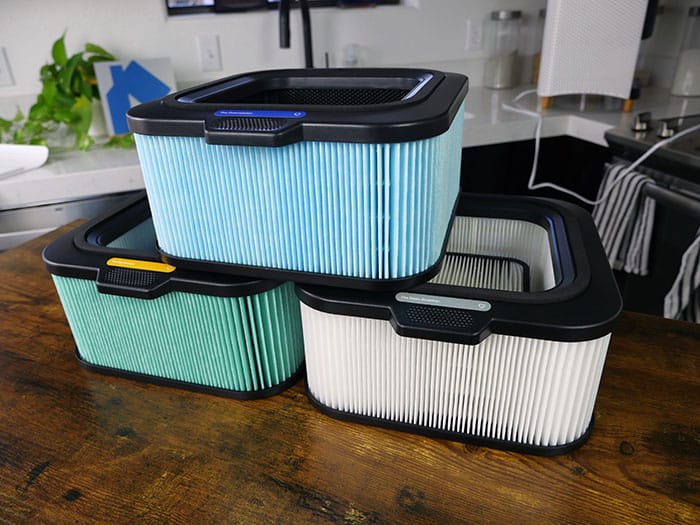
Filtrete Air Filters are another option for trapping dust mites and allergens. Their MPR filters are rated based on the rate of microparticles trapped. The Filtrete MPR 1000 filters are equivalent to a MERV rating of 11. Higher levels include the Filtrete MPR 2800 which is equivalent to a MERV 14 rating. The Filtrete filters are also certified Asthma and Allergy Friendly by Allergy Standards Ltd.
More serious reactions to dust mites
For those with severe dust mite allergies:
- Have someone else clean your bedroom, since cleaning stirs up dust mite allergens.
- If this is not an option, use a mask when vacuuming, mopping, and dusting.
- Do chores when you can lead the room for 20 minutes afterwards to allow any dust and allergens to settle.
Allergy Standards Ltd offers an Asthma & Allergy Friendly® Certification Program. Check out their lists of certified products meeting specific standards and guidelines here.
While dust mites may be somewhat inevitable, taking at least some of these precautionary measures will keep your home clean and protect your health at the same time.
